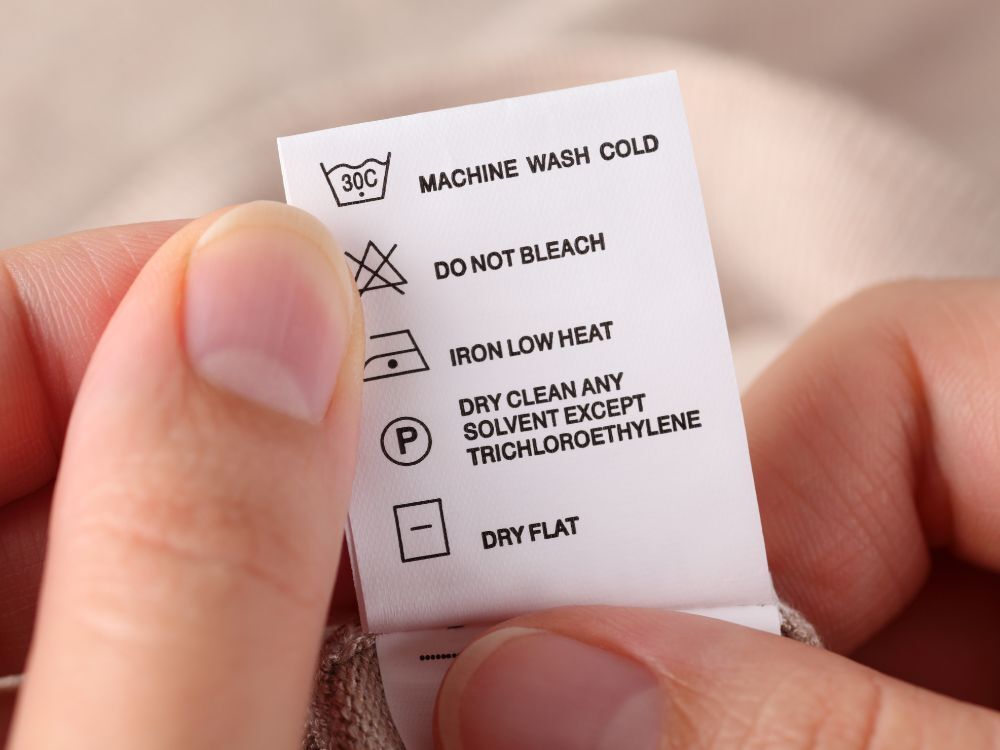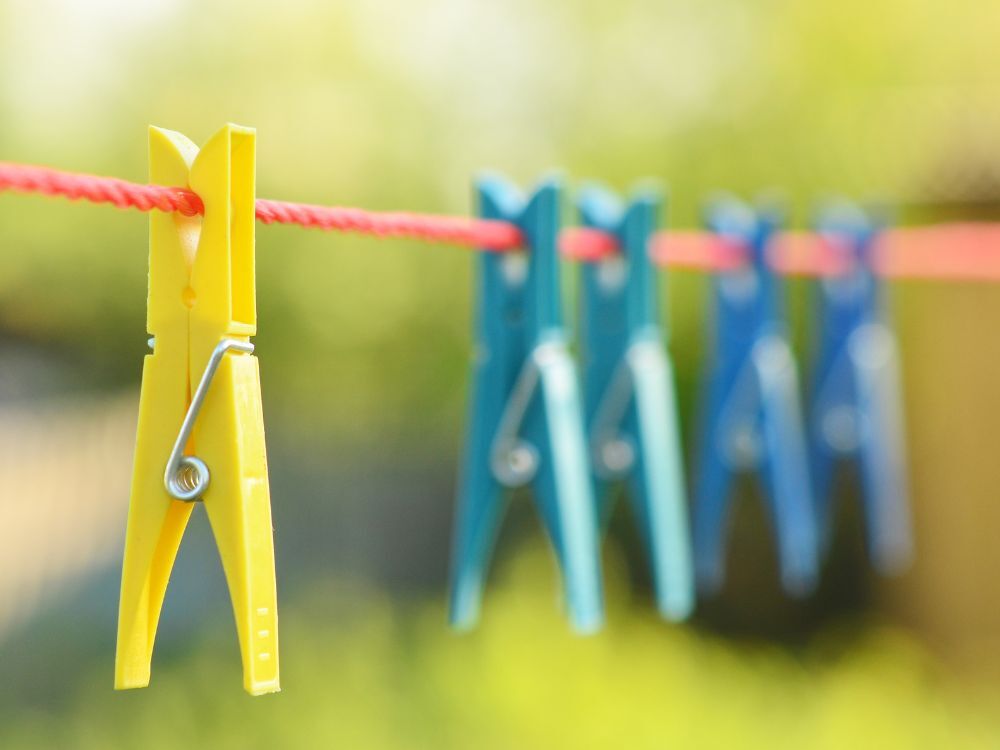
A Guide to How to Read Clothing Care Labels and Understand The Meaning of Washing Label Symbols
It's not rocket science, but it's revolutionary nonetheless; taking proper care of your clothes is essential to lengthening their lifespan and keeping them looking as good as new for longer! We all love a great deal (especially here at Atlas For Men) and men's and women's clothing that lasts for the long-haul and that can be worn on repeat means that – even post-purchase – you can keep on making savings for your wallet and the planet. Keeping your garments in good condition not only lets your outfits look sharp, but also reduces the regularity at which you need to replenish your wardrobe and prevents precious textiles from going to waste. So, the big question is, how do you best care for your clothes? The answer lies in your clothing care labels, and their many signs and symbols. Truth be told though, garment labels can be a little hard to decipher... So, we're here to help you crack the code, decrypting the meaning behind each icon so you can read your labels properly and care for your clothes as intended.


What are the 5 basic care symbols? Understanding the content of clothing care labels and the different types of icons they feature
To make life easy and caring for your clothes quick and simple, garment labels feature symbols that can be universally understood (once you know what you're looking for!). Although there are a number of variations, when it boils down to it there are just five basic need-to-know care symbols, relating to washing, ironing, bleaching, tumble drying and dry cleaning. So, let us walk you through them, one by one...
What do washing symbols mean on laundry labels: can you machine wash your item and what is the 30 symbol?
Washing symbols on your care labels mostly take the form of a wash tub – a three sided container with a wiggly line (representative of water) on top. These symbols tell you not only whether your items are machine washable, but also the different types of washing cycles that are safe and appropriate for your clothing, as well as the correct temperature to wash your items at. The presence of lines underneath the tub symbol indicates the type of cycle or washing method to use, and the inclusion of dots indicates the optimal temperature, if the temperature in degrees celsius isn't already noted in number format. Here's how to interpret washing symbols...
Washing-machine cycle:
- • Washtub with no lines underneath: Normal wash cycle
- • Washtub with one line underneath: Permanent press cycle
- • Washtub with two lines underneath: Gentle cycle
- • Washtub with an X on top of it: Do not machine or hand wash, and take to a dry cleaner instead
Washing by hand:
- • Washtub with a hand: Hand wash only
- • Twisted garment with an X through it: Do not wring out the garment
- • Twisted garment (no X): Ok to wring
Washing temperature:
- • One dot in the centre of the tub: Wash in cold water (30°C)
- • Two dots in the centre: Wash at a low heat (40°C)
- • Three dots in the centre: Wash in hot water (50°C)
- • Four dots in the centre: Wash in very hot water (60°C)
- • A number at the centre: Wash at that specific temperature

The importance of dry cleaning instructions
Dry cleaning is quite a specific process that can only be carried out by a dry cleaner, as they employ a special type of washing machine that doesn't use water but instead a solvent to clean your clothes. Rest assured that any clothing products sold and shipped by Atlas For Men won't require dry cleaning. 100% of our clothing can be washed at home – which is far friendlier to the planet! It's worth highlighting as well that dry cleaning is also sometimes entirely advised against for certain items, so it's important to follow the guidelines that your laundry labels denote. Here's what each sign means:
- • A plain circle: Dry cleaning required
- • A circle with an X through it: Do not dry clean
- • A circle with letters in the centre: Indication of the types of chemicals that can or cannot be used on the fabric. A = any solvent can be used, P = any solvent except trichloroethylene, F = petroleum solvents only
- • A circle with a line next to it: Dry clean in a particular way (short cycle, reduced moisture, low heat, no steam finish) dependent on the positioning of the line

Ironing your clothes
When it comes to ironing, it's important to know that different fabrics can withstand different temperatures. On top of that, some clothing products shouldn't be ironed at all. Fabric care labels tell you all you need to know about if and how you should iron an item, via the following ironing instruction symbols:
- • An iron with no dots inside the marking: Iron at any temperature
- • An iron with one dot: Iron at a low temperature (<110°C, required by most synthetic materials)
- • An iron with two dots: Iron at a warm temperature (<150°C, suitable for wool or silk)
- • An iron with three dots: Iron at a hot temperature (>200°C, suitable for cotton or linen)
- • An iron with an X on top: Do not iron
- • An iron with three lines at the bottom: Iron with steam
- • An iron with lines coming out from the bottom with an X over the lines: Do not steam

Other care instructions: bleaching
Bleaching symbols, represented by triangles, are pretty straightforward to understand. They let you know whether it's safe or not to bleach your garment. Here's how to read them:
- • Empty triangle: Ok to bleach if desired, and any type of bleach is fine
- • Striped triangle (two diagonal lines): Only use non-chlorine bleach
- • A triangle with CL in the middle: Chlorine allowed
- • A triangle with a CL in the middle and an X through it: Use non-chlorine bleach
- • (Sometimes filled) triangle with an X: Do not use bleach

Drying your garments: what is the tumble dry symbol?
Not all items are appropriate for putting in the tumble dryer, meaning air drying your favourite wardrobe pieces remains one of the safest ways to care for your clothes (and the planet). As an aside, even if items are tumble-dryer safe, this drying method is still the main trigger for signs of wear-and-tear.
Certain knit designs as well as acrylic and silk materials can be sensitive to and shrink under heat, wool can felt when exposed to a too-high heat (meaning it frays slightly, resulting in a more solid appearance), and some fabrics actually crease when exposed to heat – so some materials are simply a no-go for tumble drying. With that in mind, understanding how to read drying instructions on your fabric care labels is key! Just like washing instructions, drying symbols involve two elements. A square symbol conveys how to dry your item and the addition of dots indicates the maximum temperature you should do this at. Here's what you need to know:
Tumble dryer cycles:
- • Square with a circle inside: Ok to tumble dry, on a normal cycle
- • Square with a circle in the center AND and a bar underneath: Permanent press (synthetics)
- • Square with a circle in the center AND two bars underneath: Delicate cycle
- • Square with a circle inside, with an X running through it: Do not tumble dry
- • Plain square with no circle: Dry naturally
- • Plain square with no circle AND three vertical lines: Drip dry (NOTE: diagonal lines mean drip dry in shade)
- • Plain square with no circle AND one horizontal line: Dry flat (NOTE: a diagonal line means dry flat in shade)
- • Plain square with no circle AND a U shape curve at the top: Hang to dry
Tumble drying temperature:
- • Blacked-out circle: Don't use heat
- • No dots: Any heat, no special considerations
- • One dot: Low heat (<60°C)
- • Two dots: Medium heat (<80°C)
- • Three dots: High heat (>80°C)

Now they've been explained, clothing care labels will help you keep your clothes in good condition for longer!
Given all the above, the symbols found on washing labels should no longer be a mystery to you. Now there's nothing to stop you from following the guidelines on your fabric care labels and keeping your wardrobe favourites looking fresh! For more clothing maintenance tips, check out our other clothing care guides, including How to Wash and Re-Waterproof a Rain Jacket and How to Look After and Clean Your Fleece.